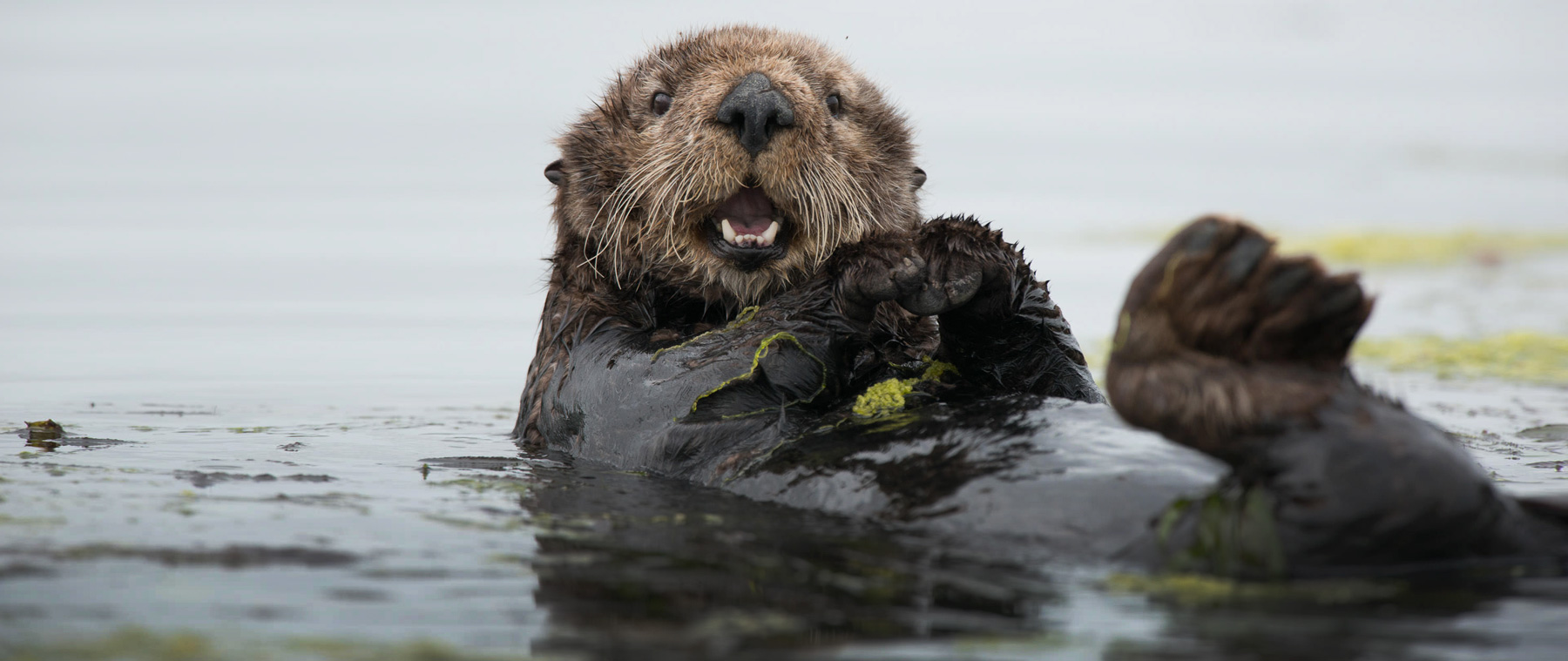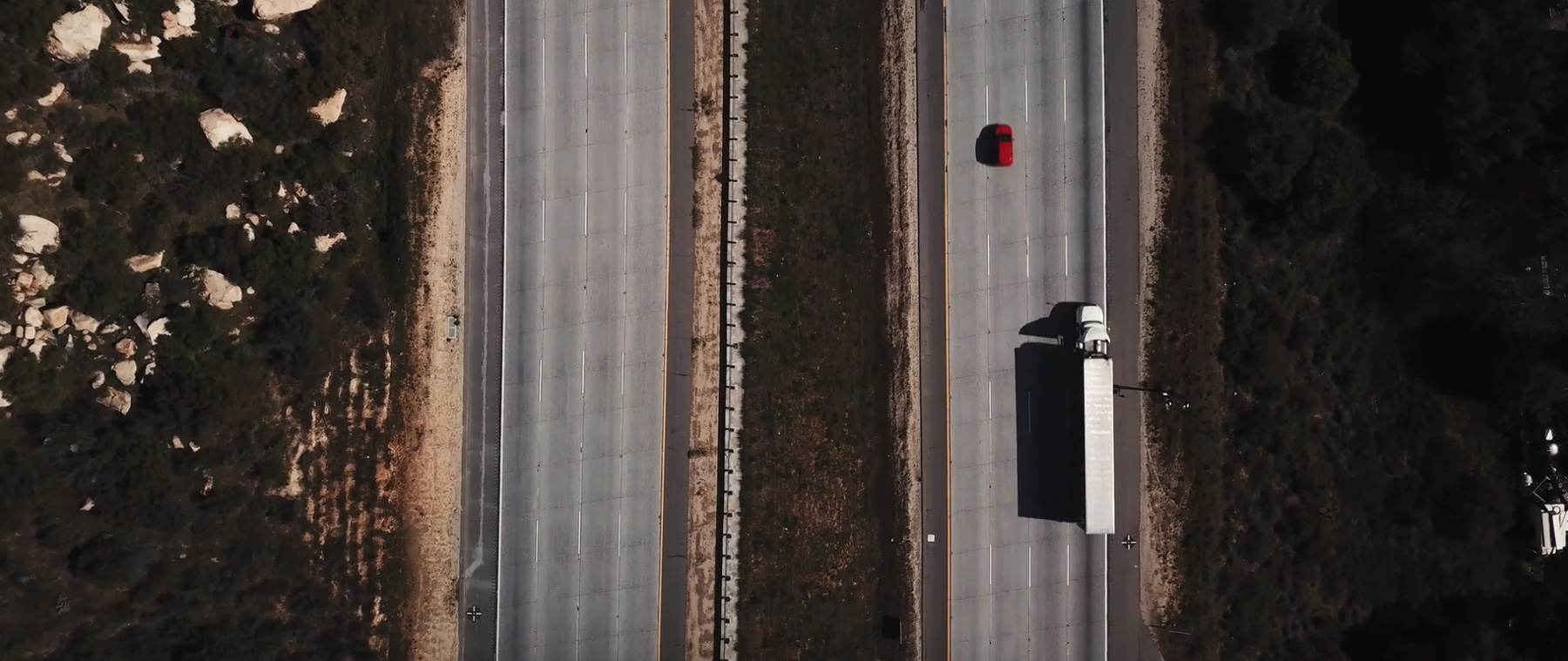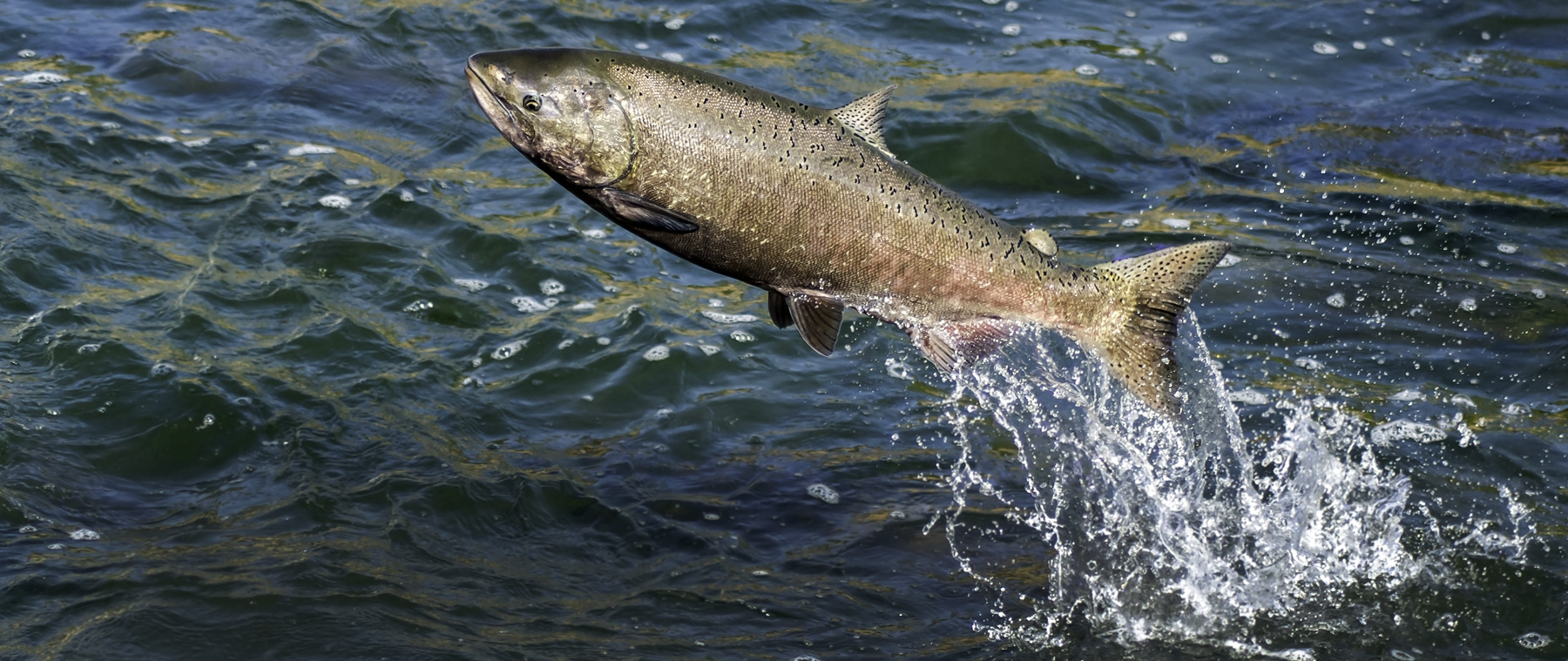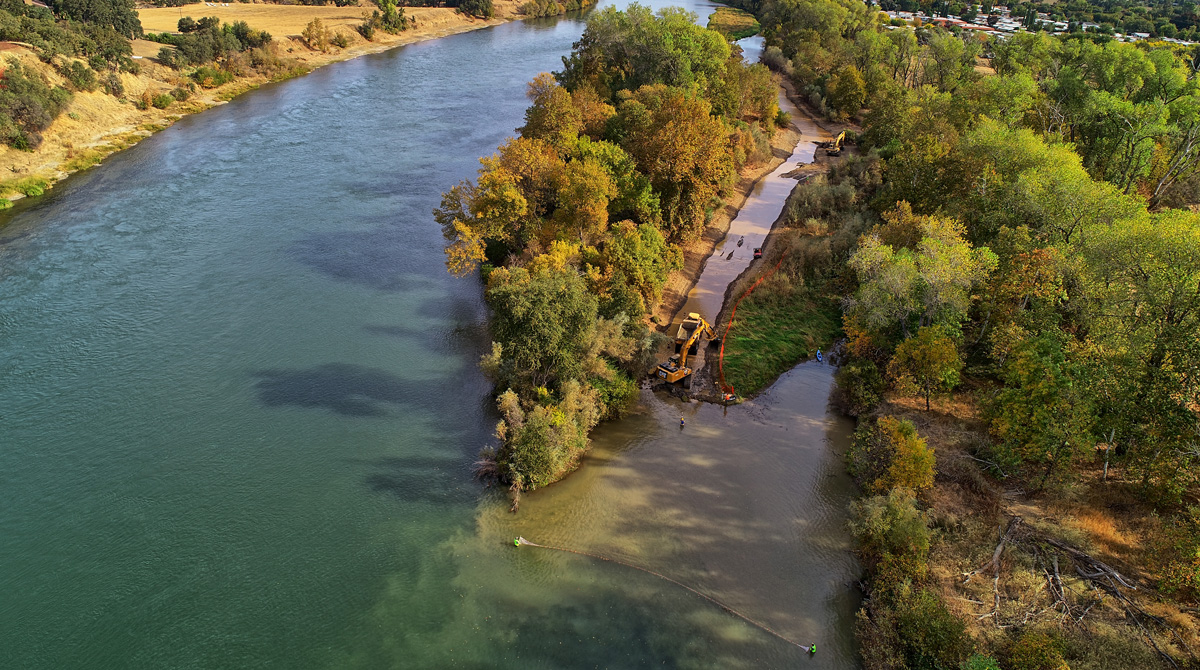
SHARE THE PLANET: PROTECTING CALIFORNIA’S WILDLIFE
See how the CSU is helping preserve California’s wildlife as threats to their habitats continue to grow.

San Francisco Bound
Playful sea otters bobbing in the waves along a craggy shoreline is an iconic image of California's Central Coast. Tens of thousands of these southern sea otters called California home before the 18th and 19th centuries, when they were hunted nearly to extinction. Today, only about 3,000 do.
The number of these endangered critters has plateaued, largely due to great white shark predation, driving a team from
Sonoma State University to see how the otter population could expand and grow.
“Within this range of Southern California to Northern California, habitats are at carrying capacity … so that basically means that [the otter population] can't grow anymore within those boundaries," says Brent Hughes, Ph.D., Sonoma State assistant professor of biology. “So, we've been looking at estuaries beyond the northern and southern extents of their current range to see how many sea otters these systems could support."
Dr. Hughes's most recent study found that the estuary at the San Francisco Bay could host 6,000 to 10,000 sea otters, a number that could take them off the endangered list. However, the San Francisco Bay could pose a whole new set of dangers: boat traffic, oil spills, pollution, invasive species and disease. As a result, Hughes is also looking at the viability of Point Reyes, Tomales Bay and Drakes Estero, among other smaller estuaries.
“Having many different pockets of sea otters in different areas can better prepare the population for any sorts of troubles that might happen in the future, such as climate change effects destroying their habitats or the loss of a certain important prey item," he says.
Before otters can be reintroduced into any of these areas, more research is needed, such as otters' effects on the ecosystem and the availability of food. Because even if there is enough prey, like crabs and clams, for the otters—which eat about 25 percent of their body mass every day—there may not be enough then for the humans who also harvest the shellfish.
“We're trying to look at all these different costs and risks associated with sea otter recovery," Hughes says. “And what it looks like is that there are a lot of benefits on the ecosystem level, such as healthier sea grasses, healthier salt marshes, possibly more fish and more carbon sequestration. However, you end up losing a lot of your local crab and clams."
The U.S. Fish and Wildlife Service's endangered species management plan for sea otters doesn't currently include estuaries, but they are planning to update it with the new options Hughes's research provides.

Bridge the Gap
The rugged mix of mountains and plains of coastal Southern California is home to foxes, bobcats, mule deer, coyotes and mountain lions. But our freeways often cut through their habitats, compressing and isolating crucial environments and separating wildlife populations.
Animals that attempt to cross the expansive roadways are often hit and killed by cars. “We're concerned about the driving safety, for the wildlife and the human being side," says Wen Cheng, Ph.D., professor of civil engineering at
California State Polytechnic University, Pomona.
“If we don't provide a crossing for that wildlife, very soon they may face extinction or become even more endangered," Dr. Cheng continues. “Because they cannot cross the freeway, they have no way to breed with others [with different] types of genes."
This is especially critical among mountain lions whose solitary nature and territoriality make it imperative for them to interact with others over a much broader area. After too much inbreeding resulting from the current isolation, future generations of those animals will have much poorer chances of survival.
The solution: wildlife crossings.
Cheng—along with fellow CPP faculty members Xudong Jia, Ph.D., Department of Civil Engineering chair and professor, and Lourdes V. Abellera, Ph.D., associate professor of civil engineering—led a student team in designing
wildlife crossings for a seven-mile stretch along I-15 near Temecula.
Currently, there is a tunnel underneath the freeway for wildlife, but human activity dissuades animals from using it. In addition, drainage pipes run beneath the freeway, but the small, dark spaces and the echoes from cars also make them unusable.
The team at CPP came up with three crossing alternatives: One would improve the current underpass by adding fencing to prevent humans from accessing it, one would make the drainage pipes passable by adding light and sound buffers and one would build a new overpass connecting habitats on either side of the freeway.
Working with University of California, Davis, they will make a formal recommendation based on their initial studies and designs to Caltrans, which will then try to secure funding for the work.
“In the future, we don't want to be the only living creatures on the planet," Cheng says. “We'd like to see as many friends as possible."

swimming upstream
Passing under the Golden Gate Bridge, adult Chinook salmon swim hundreds of miles up the Sacramento River to the Sacramento and San Joaquin valleys to lay their eggs.
Man-made dams have permanently changed these habitats, disconnecting side channels and blocking access to areas where the salmon spawn.
California State University, Chico is working with longtime collaborator the Sacramento River Forum and an array of partners to
restore some of this habitat for the juvenile Chinook salmon and ensure the next generation is strong enough to return to the ocean.
“We can't return our ecosystems to the way they used to be, so what we need to do is introduce back into the ecosystems the ability to survive and thrive given the changed conditions," says Susan Strachan, project manager in the
Chico State Geographical Information Center.
In conjunction with the California Department of Water Resources, nonprofit River Partners and the Resource Conservation District of Tehama County, the partners have completed six restoration projects along the Sacramento River between Red Bluff and the Keswick Dam through the
Central Valley Project Improvement Act (administered by the Bureau of Reclamation and the U.S. Fish and Wildlife Service).
 Construction crews dig out a side channel along the Sacramento River.
Construction crews dig out a side channel along the Sacramento River.
Sacramento Valley water districts and the Yurok Tribe, which historically depended on the Chinook salmon for their livelihood and cultural identity, have provided the construction services.
Four of the projects involved digging out shallow, low-flowing side channels connected to the main river and planting the shores with overhanging vegetation. The other two reintroduced 32,000 cubic yards of gravel downstream of the dams to form the gravel pads salmon spawn on.
“Without these off-channel habitats that are connected, [the juvenile salmon] are in very cold, very fast water," Strachan explains. “The areas for hiding from predators are limited because when the water goes down, because of the strange hydrology introduced by the dam, they're isolated from the overhanging vegetation. We're trying to provide a place for them to eat and grow so when they migrate out to the ocean, they're stronger and larger."
These projects are particularly important for the winter-run Chinook salmon, which are the most endangered group, especially after about 95 percent of the young salmon were lost during the drought in 2014 and 2015.
“It really is critically important that the winter-run be supported, that every juvenile that hatches has the opportunity to grow to a decent size and survive the rather arduous out-migration to the ocean," Strachan says.
Chico State's Amanda Banet, Ph.D., assistant professor of biological sciences, and Edward Roualdes, Ph.D., assistant professor of mathematics and statistics, have been monitoring the projects' success.
Looking ahead, the team is awaiting funding for two permitted 2020 projects, has applied for permits for a large 2021 project and is designing two additional 2021 projects.
To learn about other ways the CSU is preserving wildlife, read about its work in
marine protected areas.
Story: Alex Beall
photoGRAPHY: Patrick Record,
c/o sonoma sTate, chico state
Share this story